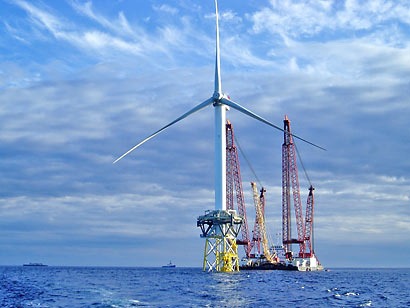
The Design of Offshore Wind Turbine Structures (DNV-OS-J101) standard provides principles, technical requirements and guidance for the design, construction and in-service inspection of offshore wind turbine structures. After its launch in 2004 it has been widely used in the offshore wind industry. This is the third revision of the standard and the updated document has been through a comprehensive peer review process involving many leading industry experts in addition to DNV’s internal quality review process.
The updates are focused on reducing costs and increasing safety. Specific highlights include:
Section 9 for grouted connections is rewritten. It is clarifying that the scope is limited to tubular and conical grouted connections in monopile structures and referring to other standards for grouted connections in other types of structures. Further, it introduces new design requirements for grouted connections without shear keys. These have been based on recent research including lab-tests and replace previous requirements which have proven inadequate. DNV along with leading industry participants are currently completing laboratory testing on scale effects of grouted connections with shear keys to provide the industry with improved data and guidance on the use of shear keys in monopile solutions. Results from this work, once reviewed and accepted through the Joint Industry Project process, will necessitate another update to DNV-OS-J101.
Section 11 for corrosion protection is restructured and expanded. It is first stating requirements for which types of corrosion protection shall be applied in the different corrosion zones, and subsequently stating requirements for corrosion allowance, cathodic protection and coating. Further, DNV replaced the definition of splash zone with the definition used in IEC61400-3.
Section 12 for transport and installation is rewritten. It is providing a more detailed introduction and bringing the standard in alignment with DNV Rules for Marine Operations.
Section 13 for inspection is rewritten. It is bringing the standard in alignment with current practice for the necessary level of inspection in large wind farms and giving the owner a choice between periodic inspections and inspections according to a risk-based inspection plan.
Since 2001, DNV has taken on the role of developing standards, specifications and guidelines in order to offer stakeholders a transparent, cost efficient and unified approach to building wind energy technology. These documents integrate decades of experience from the offshore industry with in-depth wind turbine knowledge gained from the type certification of large megawatt turbines and include athe Standard for Offshore Substations for Wind Farms, the Standard for Classification of Wind Turbine Installation Units, and Recommended Practice for the Use of Remote Sensing for Wind Energy Assessments.
For additional information:

